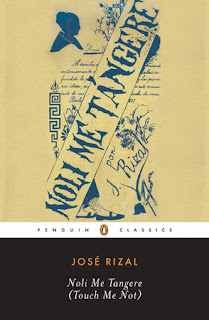First and Second Wave of Domestic Airline Competition in the Philippines
First Wave of Domestic Airline Competition
|
|
When |
What |
Who |
Where |
|
INAEC
Inaugural |
February
1, 1933 February
3, 1933 |
Modern
three- engine 10-seater Stinson Tri- Motor INAEC
became the first Filipino owned airline (three- engine 10 seater Stinson Tri-
Motor) |
On
board: Mrs. Lopez; Benita Lopez; Mariano Cacho; Antonio Yusay; Alfredo
Samson; Dominador Ruperto et.al Senator
and Mrs. Claro M. Recto; Zulueta; Juan Luces Luna; Miguel Cuenco; Luz
Guarinia; Mr. and Mrs. Roces; Stevenot; Maughan; Steele |
Iloilo-
Manila Manila-Iloilo |
|
1933
as INAEC Banner Year |
February
4, 1933 February
19, 1933 February
1933 March
3, 1933 |
Regular
flights with the Stinson/ Delas Alas announced his opposition to a proposal
to exempt aviation gasoline from tax on fuels INAEC
opened up Purchased
of second Stinson and introduction of flights to Baguio INAEC
Strinson aircrafts had toilet facilities, upholstered seats, big, and
comfortable PATCO
contemplated the 6- seater Bellanca Skyrocket Bacolod-Iloilo-
Manila routing was introduced/ Stinson was made to pass over Naujan Lake and
Taal Volcano |
Secretary
of Public Works Antonio delas Alas Commission
Agent, Mr. Buenaventura M. Veloso Eugenio
Lopez |
Manila-
Iloilo- Manila Iloilo-
Cebu-Iloilo |
|
|
March 11, 1933 |
PATCO flew its first Bellanca
Skyrocket |
Ted Hall and Aubrey Ames |
Manila- Baguio |
|
|
September 13, 1933 |
INAEC started new service |
Frank Murphy |
Manila- Iloilo- Cebu- Zamboanga |
Return of Rein |
April 10, 1933 April 1933 |
Rein duplicated his first Madrid-
Manila flight The return of the gesture of Gallarza,
Loriga and Rein through flying Tinsay’s charter business ceased |
Fernando Rein Juan Calvo |
Manila Manila- Madrid |
|
Start
of RP-US Aviation Policy Conflicts |
August
16, 1933 September
2, 1933 Yearend
1933 |
Pan
American World Airways Sikorsky S-40 arrived Filed
bill that granted Pan American World Airways a 50- year franchise for
operation of air services in the Philippines Grant
franchises to INAEC and PATCO The
Philippines in totality had ten airplanes, 34 pilots, 37 mechanics engaged in
civil aviation New
airport in the suburban town started Airports
were completed |
Harold
M. Bixby; Capt. W.S. Grooch; William Ehmer Senator
Gil Montilla Governor-
General Frank Murphy L.R. Neilson |
Manila
from Hongkong Cebu,
Zamboanga, Negros Oriental, Iloilo, Benguet, Jolo and Rizal Makati Cebu
and Baguio |
|
Birth
of the Philippine Air Force |
April
18, 1934 January
2, 1935 |
Creation
of Aviation corps in the Philippine Constabulary was proposed PC
Air Corps was formally organized Training
with US Army Corps |
Secretary
of the Interior Leon Guinto Capt.
Profirio Zablan; Basilio Fernando |
Brig.
Gen. Basilio J. Valdez Randolph
Field, Texas |
|
|
January
11, 1936 May
2, 1936 April
1937 |
Philippine
Constabulary aviation unit was transferred to the Philippine Army and
designated Philippine Army Air Corps (PAAC) US
Air Corps held its annual air maneuvers First
Stearman biplane Marked
the birth of the Philippine Air Force The
Philippine Army Air Corps expanded with acquisition of more Stearman biplanes
and a Stinson Reliant |
Commander
Shinjo Ishikawa Lt. William Lee Capt. Basilio Fernando; Lt. Pelagio A.
Cruz; Oscar Sales and Edwin Andrews |
Zambales Manila
and Davao Zablan
Field at Camp Murphy (now Camp Aguinaldo) Zablan
Feild |
Second Wave
of Domestic Airline Competition
|
Birth
of PAL: 8th Certified Airline of the Philippines; Demise of PATCO. |
April
1939 June
1940 July
1940 February
12, 1941 February
16, 1941 February
27, 1941 March
10,1941 March
11, 1941 |
New
Beechcraft Model 18, the same type of aircraft in the PAAC fleet PATCO
decided to shut down because of bankruptcy PATCO
ceased operations and new Bellanca was bought INAEC
sent a probing flight of an S-43 in an attempt to take over PATCO routes Philippine
Airways, Inc. formally incorporated with 50,000 pesos capitalization and
5,000 shares at 100 pesos per value Philippine
Airways to Philippine Airlines (PAL) PAL
entered into a management contract with Soriano y Compania Manila
Court of First Instance approved the sale of PATCO franchise to PAL |
Andres
Soriano Henry
L. Meider Capt.
Paul H. Meng Soriano Fernandez
and Anthony Macleod |
Elizalde
Mines Baguio |
|
|
March
12, 1941 |
PAL
announced that Malacanang had approved its application to operate |
|
Baguio |
|
PAL
Took Off |
March
15, 1941 April
5, 1941 April
19, 1941 July
11, 1941 July
22, 1941 September
1941 September
29, 1941 |
PAL
operated its first commercial flight with a Beechcraft Model 18, NPC54, and
five passengers PAL
issued 1,750 new shares to Shultz, Elizalde, Soriano, De Rama Steamship etc. Gunn
hired three Filipino pilots for PAL The
second Beechcraft Model 18 of PAL arrived and was designated NPC-56 Stiff
competition between PAL and INAEC PAL
expanded services The
Philippine Assembly passed Commonwealth Act 643 approving the sale of PATCO
franchise to PAL. Leopoldo
Rovita’s office for the absolute sale of PATCO’s franchise to PAL were signed Two
14-seater Lockheed Lodestars were ordered for expansion to Hong Kong PAL’s
capitalization was increased from 500,000 pesos to one million pesos with the
NDC subscribing to 150,000 pesos worth of stocks. |
Dr.
Zara; Lt. Commander J.L. Pratt; Allison J. Gibbs; Mrs. Mary Miller; William
Smith Rodolfo
T. Tirona for PAAC; Oscar D. Corpuz of PAAC; Antonio Arnaiz; Capt. Daniel T.
Sickle President
Quezon Fernandez
(Chairman of PAL) and C. Romero Soriano |
Makati
(Nielson) to Baguio City Naga;
Daet; Masbate; Tacloban; Cebu |
Role of
Aviation in Times of War
|
|
When |
What |
Who |
Where |
|
Dark
Clouds of War |
July
28, 1941 August
14, 1941 October
17, 1941 October
28, 1941 November
11, 1941 November
16, 1941 November
26,1941 November
29, 1941 |
McArthur
was given the rank of lieutenant by President Roosevelt 10
reserved regiments of the Philippine Army were mobilized and Filipino forces
were integrated The
Philippine Army Air Corps (PAAC) was inducted in the USAFFE 14
Boeing P-26 pursuit monoplanes and three twin- engine Martin B-10 bombers
were turned over to PAAC Government
of moderate Prince Fuminaro Konoye were toppled American
Far East Air Force (FEAF) established headquartes PAL
and INAEC were moved PAAC
airplanes were based in Zablan field Construction
of national airport was announced Landslide
reelection winners First
air-raid drill was held Withdrawal
of Japanese forces from China as a condition for peace was announced by
Washington Japanese
carrier task force began steaming and set course for Pearl Harbor National
Heroes Day |
President
Quezon General
Hideki Tojo Director
Basilio Fernando Quezon
(President); Osmena (vise president) Nine
fighters from Nichols President
Roosevelt President
Quezon |
Far
East Zablan
Field Nielson Grace
Park Lipa
and in Cabanatuan Las
Pinas or Paranaque Baguio Tankan
Bay |
|
Sneak
Attack at Pearl Harbor and the Philippines |
December
7, 1941 |
American
military combat aircraft in the Philippines with the total of 145 and 750
more aircrafts on the same night |
Japanese |
Formosa |
|
|
|
|
|
|




Comments
Post a Comment